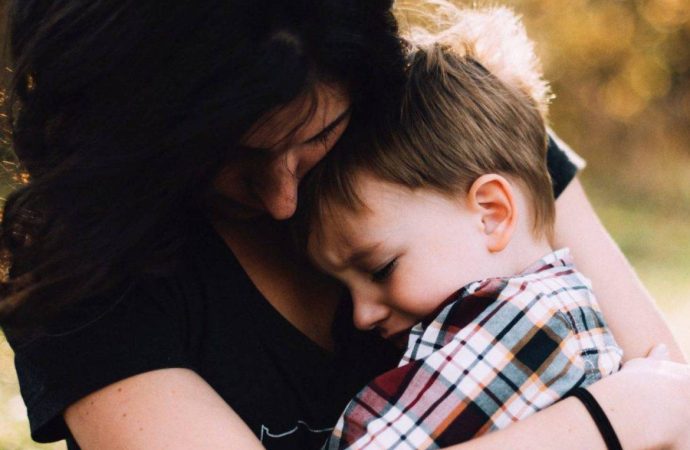Introduction Every parent and caregiver has been there the dreaded tantrum in the grocery store aisle, the sudden meltdown at bedtime, or the unexpected emotional outburst in public. Tantrums and meltdowns are a normal part of childhood development, but that doesn’t make them any easier to handle. The good news? With patience, understanding, and a
Introduction
Every parent and caregiver has been there the dreaded tantrum in the grocery store aisle, the sudden meltdown at bedtime, or the unexpected emotional outburst in public. Tantrums and meltdowns are a normal part of childhood development, but that doesn’t make them any easier to handle. The good news? With patience, understanding, and a few practical strategies, you can help your child navigate these big emotions while maintaining your own calm. In this article, we’ll explore effective ways to handle tantrums and meltdowns, from identifying triggers to using calming techniques that promote emotional regulation. Whether you’re dealing with a toddler’s frustration or an older child’s overwhelming emotions, these tips will help you respond with confidence and compassion. Ready to turn chaos into calm? Let’s dive in.
What Are Tantrums and Meltdowns?

Image by: Yandex.com
First, let’s look at what tantrums and meltdowns are and how they differ.
- Tantrums are outbursts of anger or frustration. These happen when children don’t get what they want or when they feel overwhelmed. During a tantrum, children might yell, cry, or act out physically, like kicking or throwing things. Tantrums are a way for kids to express their feelings because they don’t yet know how to talk about them.
- Meltdowns, on the other hand, are much more intense. They often happen when a child is overstimulated, tired, or feeling a lot of emotions they can’t handle. During a meltdown, a child might completely lose control of their emotions and behavior. Meltdowns are not usually about getting something they want; they are more about being overwhelmed.
Why Do Kids Have Tantrums and Meltdowns?

Image by: Yandex.com
Understanding why kids act out can help you better manage these situations.
- Normal Development: Kids, especially toddlers and young children, are still learning how to control their emotions. They don’t always know how to express their feelings properly, which can lead to tantrums and meltdowns.
- Frustration: Children often throw tantrums when they’re frustrated. If they want something but can’t get it, they may act out to show their anger or disappointment.
- Overstimulation: Loud noises, too many people, or a busy environment can overwhelm a child. Overstimulated children may have meltdowns when they can’t handle the situation.
- Communication Struggles: Children who haven’t developed full language skills might resort to tantrums or meltdowns because they can’t communicate what they need or feel.
Tips How to Handle Tantrums and Meltdowns

Image by: Yandex.com
1. Understand the Difference Between Tantrums and Meltdowns
While often used interchangeably, tantrums and meltdowns have distinct differences. Tantrums are typically goal-oriented outbursts, while meltdowns result from sensory overload or emotional overwhelm.
Tip: Recognizing the difference helps tailor your response effectively.
Example: “When my son had a tantrum over not getting a toy, I knew setting firm boundaries was key. But when he melted down after a long day, I focused on calming techniques.”
2. Identify Triggers and Patterns
Understanding what triggers your child’s outbursts can help you prevent them before they start. Common triggers include hunger, fatigue, overstimulation, or unmet needs.
Tip: Keep a journal of tantrum patterns to identify and address recurring causes.
Example: “I noticed my daughter’s meltdowns often happened before lunch—a snack break made a huge difference.”
3. Stay Calm and Composed
Children often mirror the emotions of the adults around them. Staying calm during a tantrum can help de-escalate the situation.
Tip: Take deep breaths, lower your voice, and model calm behavior.
Example: “When my son started screaming, I took a deep breath and spoke softly—it helped him settle down quicker.”
4. Validate Their Feelings
Acknowledging your child’s emotions helps them feel heard and understood, even if their reaction seems disproportionate.
Tip: Use phrases like “I see you’re upset” or “It’s okay to feel frustrated” to show empathy.
Example: “When my daughter was upset about leaving the park, I said, ‘I know it’s hard to stop playing’—this helped her calm down.”
5. Offer Choices and Distractions
Giving children a sense of control can reduce frustration and prevent tantrums from escalating.
Tip: Offer simple choices like, “Do you want to put on your shoes or jacket first?” or distract with a new activity.
Example: “When my son resisted bedtime, offering a choice between two books made him feel in control and eased the transition.”
6. Set Clear Boundaries and Consistent Expectations
Children thrive on routine and consistency. Setting clear boundaries helps them understand what’s expected and reduces anxiety.
Tip: Be firm but kind, and follow through on consequences calmly.
Example: “I calmly explained that throwing toys wasn’t acceptable and guided my child to a quiet corner to cool off.”
7. Use Calming Techniques
Teaching children calming techniques helps them learn to regulate their emotions over time.
Tip: Practice deep breathing, counting to ten, or using a “calm-down corner” with soothing toys.
Example: “We created a calm-down jar filled with glitter watching it settle helps my daughter relax during meltdowns.”
8. Reflect and Connect After the Outburst
Once the tantrum has passed, take time to connect with your child and reflect on what happened.
Tip: Discuss emotions and coping strategies when everyone is calm.
Example: “After my son’s meltdown, we talked about what made him upset and brainstormed ways to handle it next time.”
The Importance of Understanding Emotional Development

Image by: Yandex.com
It’s important to understand that tantrums and meltdowns are a normal part of a child’s emotional development. Children are still learning how to handle their feelings, and sometimes their emotions can become too much for them to manage. As they grow older, they start to develop better ways of dealing with frustration and other strong feelings. By recognizing this, parents and caregivers can be more patient and understanding when these outbursts happen, knowing it’s a stage of learning and growth.
The Role of Communication in Preventing Tantrums

Image by: Yandex.com
Good communication is key in preventing tantrums and meltdowns. Children who are able to express themselves with words are less likely to have emotional outbursts. It’s important for parents and caregivers to encourage their children to talk about how they feel. Even if they can’t fully express themselves, asking simple questions like “How do you feel?” or “What do you need?” can help children start to identify and communicate their emotions. This can reduce frustration and help them feel more in control of their feelings.
Recognizing When Professional Help is Needed

Image by: Yandex.com
Sometimes, despite our best efforts, tantrums and meltdowns can become more frequent or intense. If this happens, it might be a sign that a child needs additional support. If a child’s emotional outbursts are affecting their daily life, relationships, or school performance, it could be helpful to talk to a professional, like a pediatrician, therapist, or counselor. They can offer advice on how to manage challenging behaviors and determine if there might be an underlying issue, such as a developmental delay or emotional disorder, that needs attention.
The Future of Handling Tantrums and Meltdowns

Image by: Yandex.com
In the future, there may be even more tools and strategies available to help manage tantrums and meltdowns. As understanding of child development grows, new techniques and resources will likely emerge to help parents and educators support children’s emotional growth. Advances in technology, such as apps or virtual support groups, could provide parents with real-time advice and strategies to deal with emotional outbursts. With continued research and greater awareness, we can expect better ways to support both children and caregivers in managing tantrums and meltdowns.
Reflecting on the Situation: Factors to Consider
After a tantrum or meltdown, think about what happened. Understanding the reasons behind the outburst can help you handle future situations better. Here’s a table that can help you reflect on different factors that might be affecting the child.
| Factor | What It Means | How It Affects the Behavior |
|---|---|---|
| Child’s Age | Younger children have more tantrums | Younger kids are still learning how to control emotions |
| Time of Day | Tired or hungry children are more likely to act out | Tantrums often happen when kids need a nap or meal |
| Environment | Busy or noisy environments can overwhelm children | Overstimulated kids may have meltdowns in crowded places |
| Communication Skills | Younger children may not know how to express feelings | Children with limited language skills may resort to tantrums |
| Your Response | Staying calm can help calm the child | Your calmness can stop the situation from getting worse |
Tantrums vs. Meltdowns: What’s the Difference?
Here’s a simple comparison to help you understand the difference between tantrums and meltdowns:
| Characteristic | Tantrums | Meltdowns |
|---|---|---|
| Cause | Frustration over a want or need | Overwhelm due to stimulation or emotions |
| Intensity | Can be loud but manageable | Very intense and out of control |
| Duration | Short (a few minutes) | Longer, may take time to calm down |
| Control | Kids may calm down with help | Kids may need extra support to calm down |
| Response to Help | Can be distracted or redirected | Needs more patience and time to calm down |
Conclusion
Tantrums and meltdowns are a natural part of childhood, but with the right strategies, you can help your child navigate these emotional storms while maintaining your own calm. By understanding triggers, validating feelings, and teaching calming techniques, you’re not only managing difficult moments but also fostering emotional resilience and self-regulation in your child. Remember, patience and consistency are key progress takes time, and every small step counts. Whether it’s offering choices, setting boundaries, or simply being there with a comforting presence, your support makes all the difference. So, the next time a tantrum strikes, take a deep breath, trust your instincts, and know that you’re helping your child learn valuable life skills. Together, you’ll weather the storm and come out stronger on the other side.
Call to Action
What’s your go-to strategy for handling tantrums and meltdowns? Share your experiences and tips in the comments below, and subscribe for more parenting advice and child development insights!
















